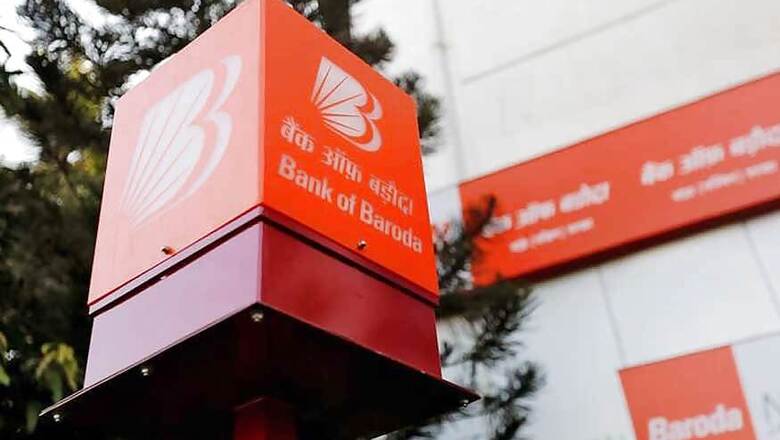
views
New Delhi: The Board of Bank of Baroda (BoB) on Wednesday approved fair equity share exchange ratio for amalgamation of Dena Bank and Vijaya Bank with the former. Post today's merger, Bank of Baroda will become the third biggest public sector bank after State Bank of India and ICICI.
The merger will be effective from April 1. This is the first ever three way merger in Indian banking.
Speaking to media, union minister Ravi Shankar Prasad said that all employees of Vijay Bank and Dena Bank will be transferred to Bank Of Baroda. The minister made it clear that no retrenchment will take place in the merger process.
"There will be no impact on the service conditions of the employees and there will be no retrenchment following the merger," Prasad said.
He also said that the amalgamation would help create a strong globally competitive bank with economies of scale and enable realisation of wide-ranging synergies.
"Leveraging of networks, low-cost deposits and subsidiaries of the three banks has the potential of yielding significant synergies," Prasad said.
The amalgamated banks would have access to a wider talent pool and a large database that may be leveraged through analytics for competitive advantage in a rapidly digitalising banking context, Prasad said.
Post this merger, the number of PSU banks will come down to 18.
As per the Scheme of Amalgamation announced by Bank of Baroda, shareholders of Vijaya Bank would get 402 equity shares of BoB for every 1,000 shares held in the bank.
In case of Dena Bank, the shareholders would get 110 shares of BoB for every 1,000 shares owned in the bank.
The Scheme of Amalgamation would be laid before the Parliament for 30 days for the perusal of the members.
Sources said the scheme would be laid before the Parliament before the end of the Winter Session, which is to end on January 8.
Last September, the 'Alternative Mechanism' (AM) headed by Finance Minister Arun Jaitley had decided to merge Dena Bank and Vijaya Bank with Bank of Baroda. The decision was in a bid to create a stronger and sustainable global-sized lender.
Last year, Financial Services Secretary Rajiv Kumar said employees of the merged entity would enjoy best of service conditions and no employees would face a service condition which is in any way adverse in nature. The brand identity would also be protected.
The government has already committed capital support for the merged entity, which is projected to have a net NPA ratio of 5.71 per cent. This would be much lower than that the average ratio of 12.13 per cent for public sector banks.
Provision Coverage Ratio (PCR) would be better at 67.5 per cent against the average of 63.7 per cent. For the merged entity, the cost to income ratio would be 48.94 per cent whereas the average for public sector lenders is 53.92 per cent.
Capital Adequacy Ratio (CAR) at 12.25 per cent would be significantly above the regulatory norm of 10.87 per cent.
In 2017, SBI merged five of its subsidiary banks with itself and also took over Bharatiya Mahila Bank. This catapulted the state-owned bank into the league of top 50 global lenders.
(With PTI inputs)




















Comments
0 comment